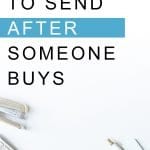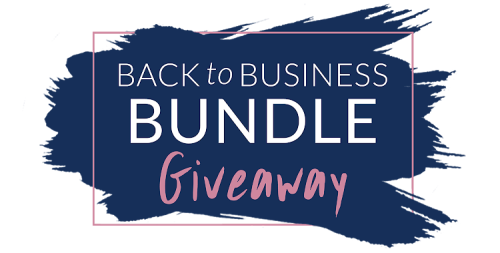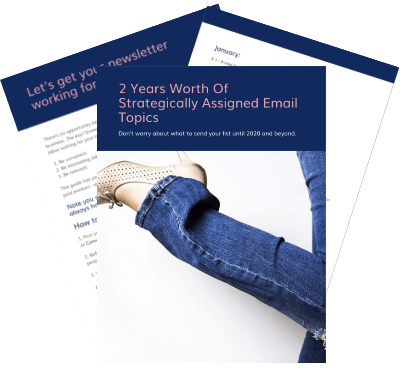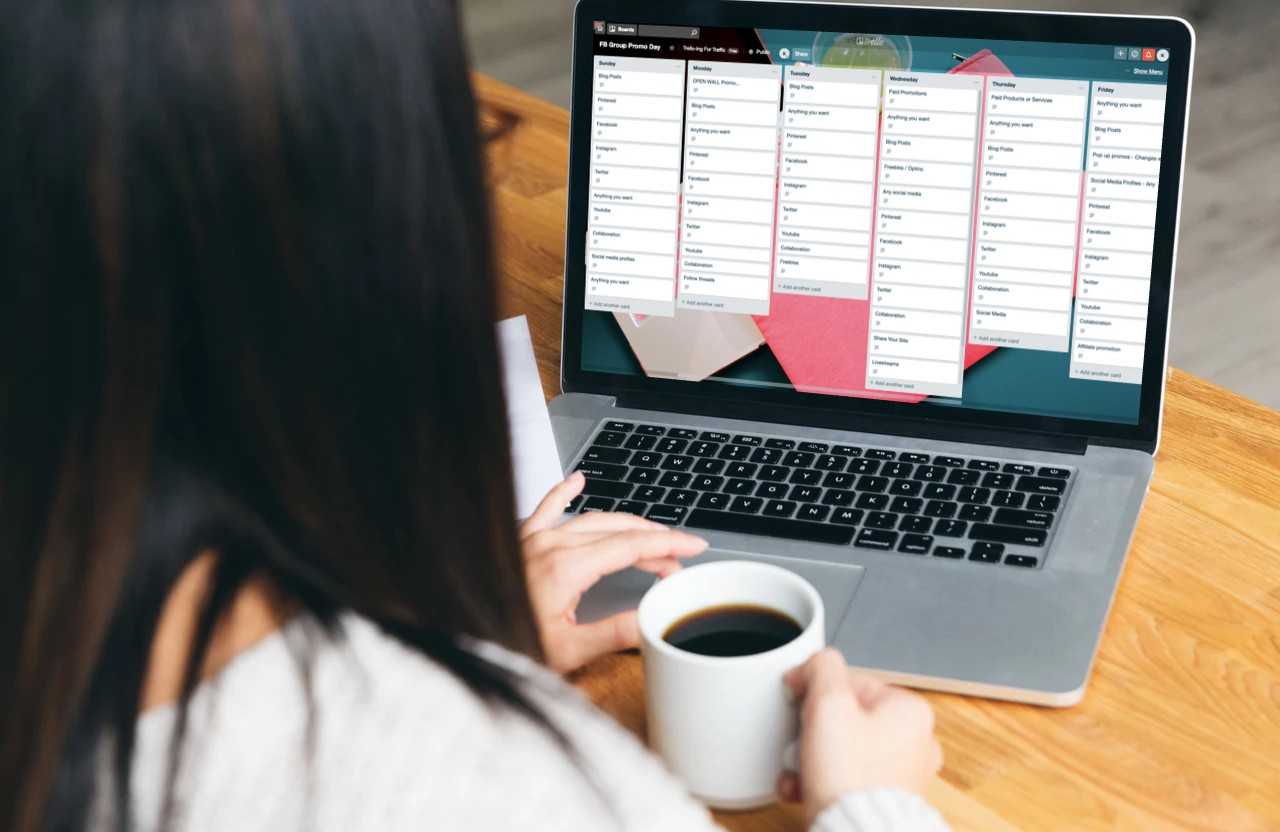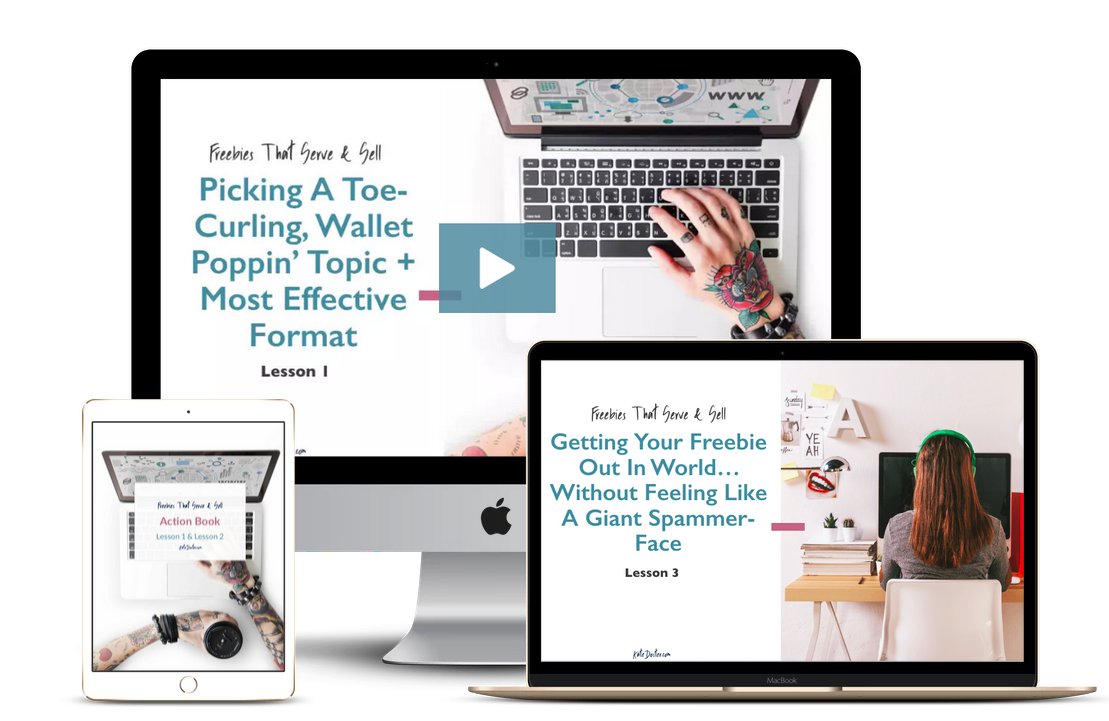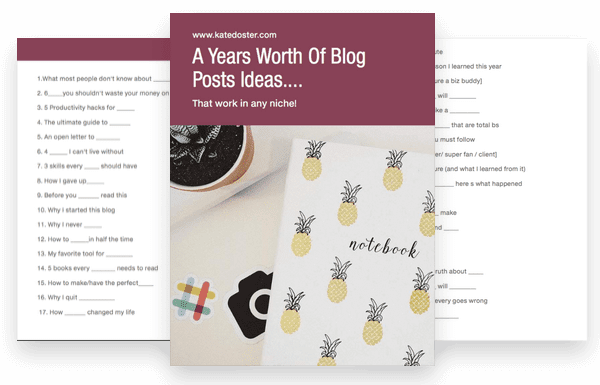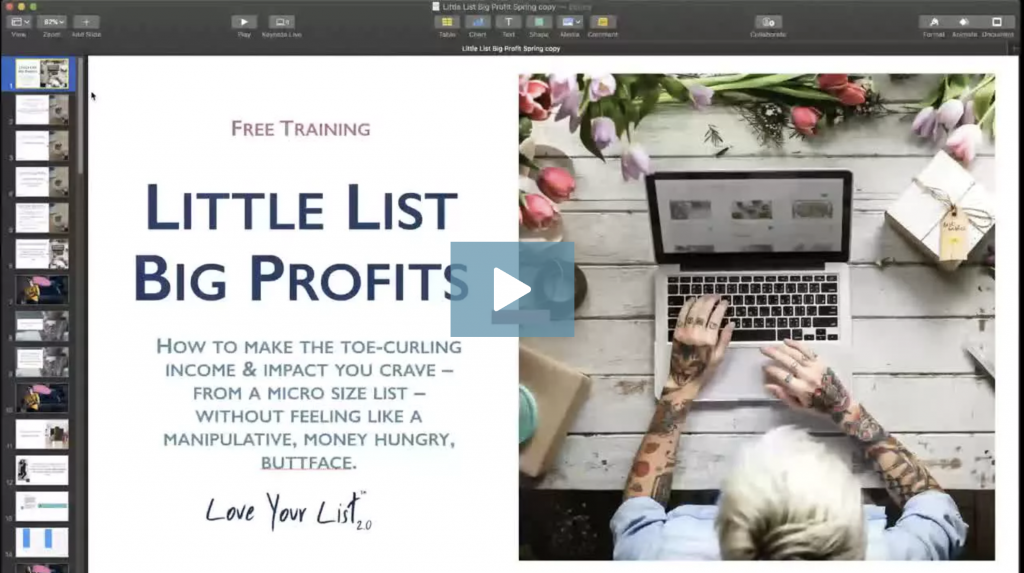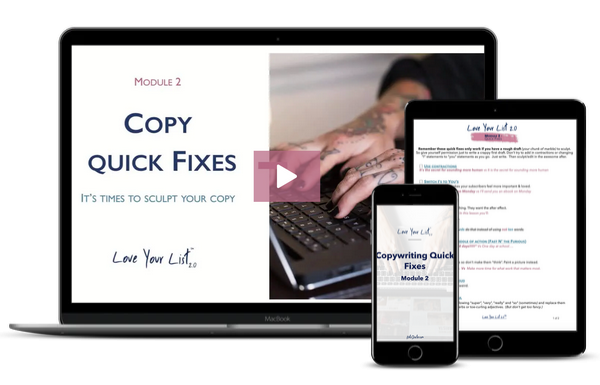If you’ve ever wondered what to send after someone buys your product, I’ve got you covered.
Once someone buys your product or service, it’s easy to forget to send them emails and stay in their inbox. The truth is, it’s a heck of a lot easier to keep people when you show them a little email love.
Before I dive in on what to send after someone buys, I want to give you a heads-up that the Back to Business Bundle Giveaway is ending in two days! Sign up to get access to the super-secret gift page chock full of free courses, resources, videos and more is a collaboration of 17 different freebies that you get access to when you join in… did I mention that it’s all FREE? Yes, seriously. Get on this while you can because it all disappears on Valentine’s Day at midnight. You don’t want to miss out.
10+ Emails You Can Send to People AFTER They’ve Hit the Buy Button
When someone buys your product, course or service, you want to make sure you send at least 3 emails after the fact – and maybe more. These emails you can send after someone buys are in no particular order and you can use these for almost any program or product you have.
Before you crank up your Convert Kit, the first thing to ask yourself is ‘what’s the point’? Sit down and get real with yourself while you do this. If you’re thinking logistically, of course you want to avoid buyers remorse but there are tons of other reasons to stay in someone’s inbox.
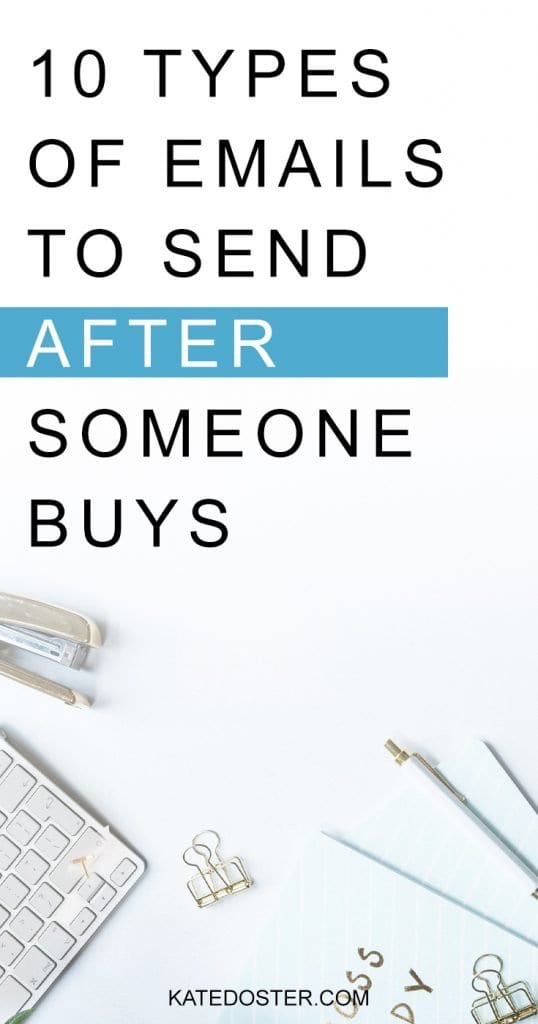 At Kate Doster HQ, we want our people to feel seen, heard and encouraged. That goes well beyond a ‘welcome’ email after the payment has gone through.
At Kate Doster HQ, we want our people to feel seen, heard and encouraged. That goes well beyond a ‘welcome’ email after the payment has gone through.
As a course creator or service provider, it’s up to you to know all the “yea buts” and nervousness that people might have after investing in your thing and help them overcome their challenges. Of course, different products and different price points are going to have different needs when it comes to your follow-up emails but if someone is spending thousands of dollars on your course, you may want to spend some time and effort on this.
There’s no hard and fast rules on what price point it is that comes with follow up emails. It’s up to you in how you want your buyers to feel. Because, truth is, it’s a lot easier to create repeat buyers than to find a bunch of new ones. That’s why I believe in the Easy Yes Offer so much.
Your Easy Yes Offer is something that is at a lower price point that is exciting and packed with a ton of value AND that solves a very specific problem.
It’s literally a no-brainer for your people. I can’t tell you the insane amount of people who ended up buying my signature course, Love Your List, after buying the Email Marketing Fairy or Trello Magic.
Pro tip before we get into what to send after someone buys:
You don’t have to create all of these emails ahead of time.
Yes, you can sit down and have your emails all ready to go before you launch your product or program but it’s perfectly fine to create them in ‘real time’ and then save them as you go to create a buyers sequence for later launches.
Email #1: Logistical Email
This email lives up to it’s name. It’s the logistics of what happens next when someone buys. You’re going to say something like, “Congrats, you’re in – here’s what to do next…” and give details on how to access the course, an onboarding form for services or their download link for an e-book or digital product.
If their purchase involves another platform, like a membership area, this may be two emails that include their welcome email plus another email with details on how to access their training with username and password.
Your logistical email needs to cover the basics:
- Who: Who you are and how you’re going to help them
- What: What they get with their purchase
- Where: Where they can access their purchase or send in their onboarding information
- Why: Why this purchase is a smart move on their part
The main thing is to reassure them they made a good investment and make your people feel welcomed.
Email #2: Module Release
If your course or program is on a drip, meaning they don’t get access to everything all at once and it’s “dripped out” on a schedule, this is where you outline when they get access to each module or lesson.
Even if your content isn’t dripped, you still might want to send weekly emails with things to work on that particular week to keep your people active in the course and encouraged along the way.
If you have an e-book, this doesn’t have to be nine weeks worth of emails. You may just want to send out a few emails on how to get the most out of what they’ve purchased and reassure them that they’ve made a good decision.
Email #3: Red Carpet Emails
When someone purchases from you, you want them to feel seen and heard. There is no better way to do that than with a personalized message I call the “Red Carpet Email”. You can send it right after someone buys or a month later, either one works. The truth is, what matters with the Red Carpet email is that you have taken the time to send them something personal and not canned.
Sending Red Carpet emails lets your people know that you genuinely care about them.
When someone buys Love Your List, I send a personalized loom video. Loom is a Chrome extension that records your face, your screen or a combination of both. The free plan gets you 100 personalized videos and the paid version is only $10 a month. I like to make these personalized to the person I’m sending them to. I make sure to say their name and if I know anything about them, I include that in the video too.
If you’re not selling a course, you can send a quick email thanking them for being in your community or thanking them for allowing you to help them grow their business. These can be short, sweet and to the point.
If you’re getting a large volume of purchases or you don’t know anything specific about their business, just be genuine. Again, you want them to feel seen, heard and encouraged.
While these work great any time, whether in the first day or two after purchase or three weeks later, you may even find that three weeks later has a bigger impact.
Email #4: Community Builders
If you have a Facebook group, online forum or Slack channel that comes with their purchase, talk about what is going on in your community. You can take a screenshot or talk about what is going on in your group.
If you don’t have a group or Slack channel associated with that purchase, then have them follow you or tag you on Instagram. This doesn’t have to be them asking for help, it can be a way for them to connect with you and say hello.
You could say something like, “If you’re enjoying reading the ‘Super Awesome Traffic’ book why don’t you go ahead and take a screenshot and tag me on your instagram stories.”
If you teach your audience to tell their friends in this organic way, it’s ultimately going to get you more buyers in the future because it gives you that element of social proof. Plus, it helps people feel seen, heard and encouraged (seeing a theme here?).
Email #5: Sticking Points
Every buyers series should have a ‘Sticking Points’ email. When you’re selling a product, course or service, you know there are certain points when your buyers are going to get stuck.
Your ‘Sticking Points’ email gives them a little something extra to help them over the hump. The first three days after people buy anything is when they are the most likely to have buyer’s remorse so you might want to cover a sticking point day two after someone buys.
Another good time to send a Sticking Points email is a week or two after someone buys. That’s when people lose steam (and interest). It’s just human nature to lose some excitement after the fact.
If your product is a course or coaching program and you know they should be at a certain point with their program, you could send something like, “Hey I just want to say that I’m so excited that you’re sticking with it. I know a lot of people get tripped up and start to lose interest in Trello (for example) after a couple of weeks…” Then, go into why that happens and share a quick tip for getting back into the groove.
People’s sticking points are going to be psychological, technical or just generally where you see people dropping off. If you address this in your emails, your people are much more likely to keep at it and get the results you promised them when they bought from you.
Email #6: Student Successes
The ‘Student Successes’ email pairs nicely with your ‘Module Release’ email that I talked about in Email #2. This is where you share some wins that other people have with your course, product or service. These are like testimonials after the fact that reassure them they made a smart purchase and encourage them to get the same results.
Your email might sound something like, “Hey Guys! I just want to pop in and give a huge congratulation to our listie, Mike. He had an amazing launch of his course, Stupid Simple SEO! We are so proud of Mike for putting in the work and that’s the reason why I created this course so you can get the same results.” This is a good time to talk about your mission statement and why you created the course or program in the first place.
Be specific about exactly what piece of content helped and include link to that lesson or reference that chapter in your e-book so they can find it easily.
Don’t be afraid to show your other buyers that other people are doing well. We think about including success stories in our launch emails but sometimes forget about how encouraging they can be once someone purchases.
Depending on your product, it may not be feasible if you’re selling 1,000 copies a month of a $24 E-book but you can have a student spotlight of the month, regardless of your volume or price point.
You’re encouraging people to take action and get results and that’s the whole reason you’re creating products in the first place, right?

Email #7: Check-ins
If you’re stuck on what to send after someone buys, the ‘check-in’ email is a no-brainer. These are really simple and easy to write. All you’re asking is what they thought about a particular module or chapter or you’re just checking in and asking how everything is going.
Your email can be as simple as, “Hey just wanted to check in and see how everything is going with your Pinterest ads. Did you put one up yet? What stumbling blocks are you having? Hit reply and let me know.”
If you’re like “But Kate! I have so many students and buyers.. I could never answer all of them!”, don’t let that stop you. You can always let them know in the PS section that you might not be able to get back to them right away. Make sure to let them know that their opinion is super-important and their feedback could be the inspiration for a Facebook live or additional training in the course or a chapter in the next e-book.
These check-ins are also a great way to get feedback, especially if you’re afraid of…
Email #8: Surveys
Sometimes, as we put ourselves out there, it’s easy to let the fear of constructive feedback hold us back.
I get it. The feedback from Love Your List was that I talk too fast sometimes. If you’ve ever listened to Inbox Besties, you know that this is just the way that I talk. That feedback in the course led to me creating transcripts of the videos so that people can follow along while they watch or download them and read them at their own pace. Not only does this help my students, it also becomes a feature or bonus on my next launch.
Don’t let the fear of honest feedback hold you back from asking your buyers what they think.
In the ‘How She Did That’ podcast with Lindsey Padilla, they talk about how to get amazing feedback from your digital products and your one to one services with surveys.
Basically, what you’re asking is:
- What were you expecting to get out of this lesson or course?
- What did you accomplish?
- What stumbling blocks do you have?
This feedback can help you refine your offering and also gives you the opportunity to give your people the red carpet treatment with a personalized email or loom video.
Email #9: Requesting Testimonials
After someone buys your product, program or service, asking for testimonials is a great way to connect with your buyers and gives you selling points for your next launch.
Sometimes, people don’t know what to say if you ask them directly for a testimonial. You may want to give your buyers prompts. When I ask my Love Your List students for feedback, I give them prompts like:
- Before investing in Love Your List, I felt like ____________.
- Aftewards I felt like __________.
By giving them something to start with instead of just asking for a review, you’re more likely to get a better testimonial. Ask the results they are getting, how they are feeling and milestones they have reached, regardless of how little or big they are.
Another way to approach testimonials is to ask, “Hey, let me know what you think about (course, e-book, module)”… then, thank them for their feedback. When you straight up ask for testimonials, sometimes people get tongue-tied and they feel like they’re on the spot. When you have an organic, real conversation, you’re likely to get some great feedback and usually, people are happy to let you use that as a testimonial.
Email #10: Affiliate Ask
Asking your buyers to promote your product to their network or community usually comes a little later after someone buys, especially if your product is a course or coaching program. Since Love Your List is a bigger course, it wouldn’t make sense to ask for affiliate sales immediately after someone buys but for some of my smaller products like Email Marketing Fairy or Trelloing for Traffic, I could pretty much ask them to be an affiliate right away.
Your ‘Affiliate Ask’ email is simply, “Hey do you want to tell your friends about this product? Let me pay you for it.”
If you have an affiliate program, this is the email you send to remind people how to sign up and where they can get their login information if they already have signed up to be an affiliate.
Affiliates are a great way to get additional eyeballs on your products that you wouldn’t get otherwise. I’m including an affiliate strategy with all of my launches, big or small, going forward. Seriously, it’s worth it.

Email #11: Bonus Content
Like your ‘Sticking Points’ email, the ‘Bonus Content’ gives your buyers a little something extra to help them get results. This can be as easy as highlighting specific content in the course or e-book that they’ve purchased or you can create bonuses to shower your people with and make them feel extra special.
For example, I talk about Easy Yes Offers’s in Love Your List quite a bit. As a bonus, I could potentially have an “offer optimizer” in the form of a bonus lesson or downloadable PDF.
Your ‘Bonus Content’ email should have some additional tips and tricks to help your people get success. If you already have complementary products or programs, you can always pull some of that content out as a bonus for your buyers. This is also a great way to cross-pollinate and create interest in your other products.
Again, it’s a lot easier to get someone to buy from you more than once than it is to attract brand new people. If someone gets results from the first product they bought and you give them a sneak peek into another product as a bonus, a percentage of those people are going to buy the other product too.
Don’t get overwhelmed with what to send after someone buys.
You don’t have to use all 11 of the emails I’ve listed here. These are just examples of the types of emails you can send to your people after they purchase. As long as you have at least 3 emails besides your “welcome” or logistical email, your people should feel like they are taken care of and look forward to buying more from you in the future.
When you know what to send after someone buys, and have it in place, it makes your buyers feel seen, heard and encouraged. If you already have your emails to send after someone buys, this might be a good time to review your buyers sequence and polish them up.

